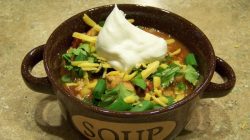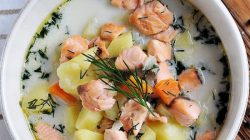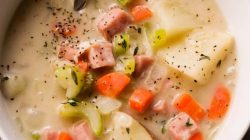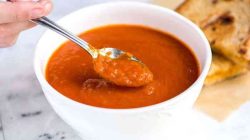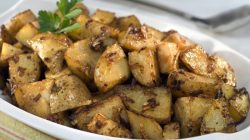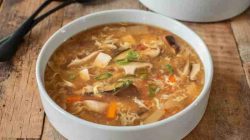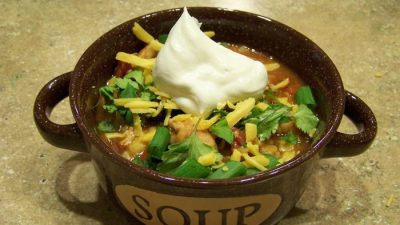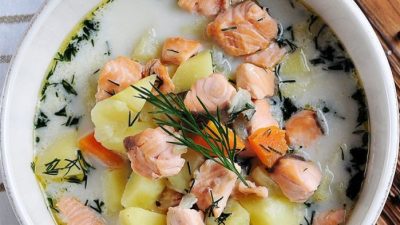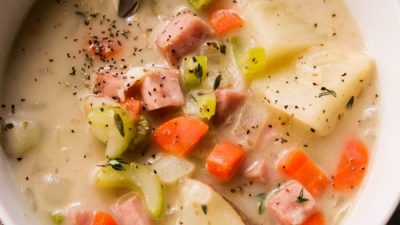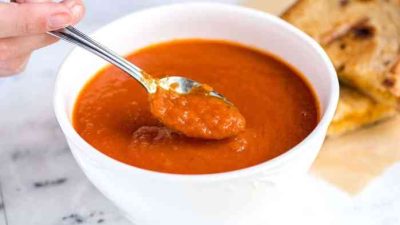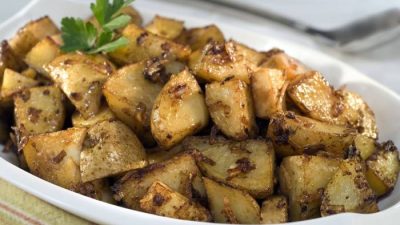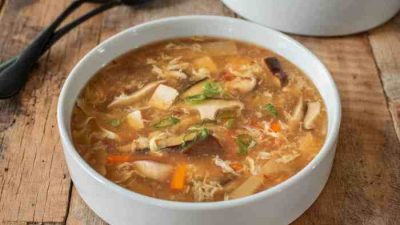Blender Soups: A Culinary Exploration
Recipes for blender soups – Blender soups offer a convenient and flavorful way to enjoy a wide variety of ingredients. Their ease of preparation, coupled with the ability to customize flavors and textures, makes them a popular choice for both novice and experienced cooks. This article delves into the world of blender soups, covering essential techniques, equipment, and recipe ideas to inspire your culinary creativity.
Blender soups offer a quick and easy way to enjoy healthy, flavorful meals. A particularly delightful variation is a chilled peach soup, perfect for warmer weather; you can find a great recipe for this here: peach soup recipe. From creamy tomato to vibrant vegetable blends, the possibilities for delicious blender soups are truly endless.
Introduction to Blender Soups
Making soups in a blender provides several advantages. The high-speed blending creates incredibly smooth and velvety textures, unlike those achievable with traditional methods. This process also efficiently breaks down ingredients, releasing maximum flavor and making the soup easier to digest. Furthermore, blender soups are incredibly versatile. Almost any combination of vegetables, fruits, legumes, and grains can be used, leading to a vast spectrum of flavor profiles, from creamy and comforting to bright and refreshing.
While the concept of blended soups isn’t new (think of gazpacho, a classic chilled Spanish soup), the widespread use of high-powered blenders has significantly expanded the possibilities and popularity of this culinary approach.
Essential Equipment and Ingredients
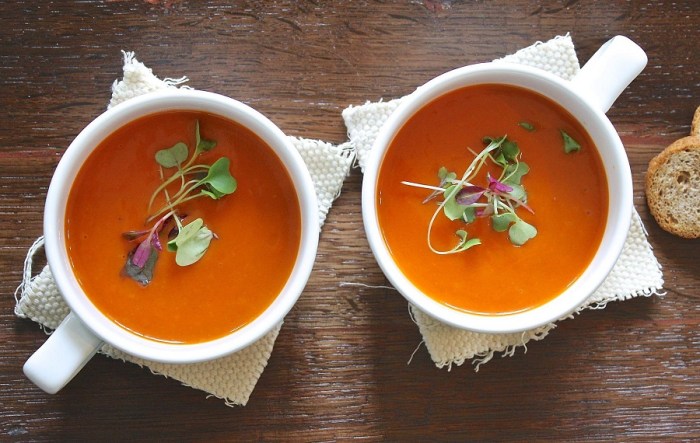
Source: bestofcrock.com
The right equipment is crucial for successful blender soup making. High-speed blenders, immersion blenders, and even standard blenders can be used, each with its own strengths and weaknesses. Similarly, a diverse range of ingredients contributes to the versatility of blender soups.
| Blender Type | Power (Watts) | Price Range | Suitability |
|---|---|---|---|
| High-Speed Blender | 1000-2500+ | $200-$800+ | Ideal for smooth, velvety soups; handles tough ingredients easily. |
| Immersion Blender | 150-400 | $30-$150 | Great for smaller batches and directly blending in the pot; less powerful for very thick soups. |
| Standard Blender | 300-700 | $50-$200 | Suitable for simpler soups; may struggle with very thick or fibrous ingredients. |
Common vegetables include carrots, celery, onions, potatoes, tomatoes, and leafy greens. Fruits like tomatoes, berries, and mangoes add sweetness and acidity. Pantry staples that elevate blender soup flavors include vegetable broth, spices (cumin, coriander, turmeric), herbs (basil, oregano, thyme), and a touch of acidity (lemon juice, vinegar).
Basic Techniques for Making Blender Soups
Creating a basic blender soup is a straightforward process. First, sauté aromatics (onions, garlic) for depth of flavor. Then, add your main ingredients (vegetables, broth) and simmer until tender. Allow the mixture to cool slightly before carefully transferring it to the blender. Blend until smooth for a creamy soup, or leave some texture for a chunkier consistency.
Seasoning is crucial; adjust salt, pepper, and any other spices to your preference during or after blending. Taste and adjust as needed.
Simple Vegetable Blender Soup Recipe:
- 1 tbsp olive oil
- 1 onion, chopped
- 2 carrots, chopped
- 2 celery stalks, chopped
- 4 cups vegetable broth
- Salt and pepper to taste
Advanced Blender Soup Techniques
Roasting vegetables before blending adds a layer of smoky sweetness and depth of flavor. Different liquids (broth, milk, cream, coconut milk) dramatically impact the soup’s texture and taste. For layered soups, blend some ingredients separately and layer them in the bowl for visual appeal. To prevent overheating, blend in batches and use short bursts. Over-blending can lead to a bitter taste, so blend until the desired consistency is reached.
Recipe Variations and Ideas
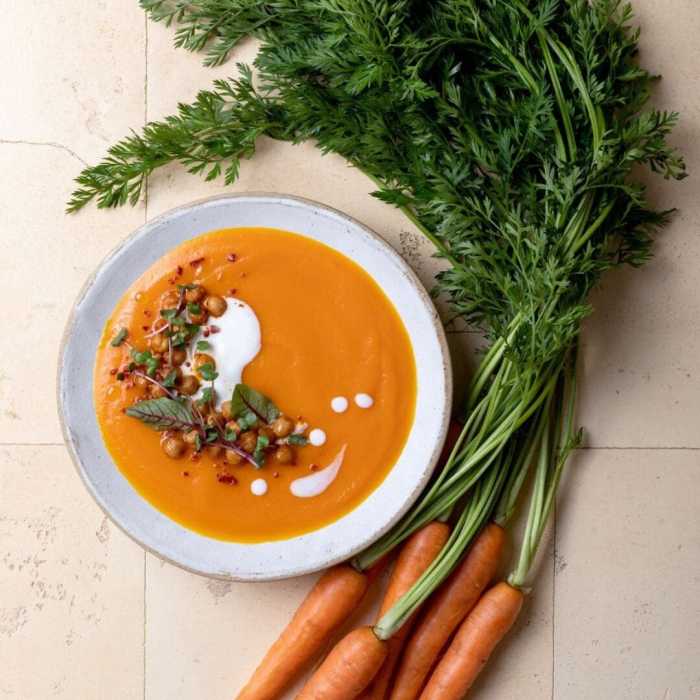
Source: cookingchew.com
The possibilities for unique blender soup recipes are endless. Here are five diverse examples:
- Creamy Tomato Soup: Roasted tomatoes, vegetable broth, cream, basil.
- Spicy Lentil Soup: Red lentils, coconut milk, curry powder, ginger.
- Chilled Cucumber Soup: Cucumber, yogurt, dill, mint.
- Roasted Butternut Squash Soup: Roasted butternut squash, vegetable broth, maple syrup.
- Black Bean Soup: Black beans, vegetable broth, cumin, chili powder.
| Dietary Restriction | Recipe 1 | Recipe 2 | Recipe 3 |
|---|---|---|---|
| Vegan | Spicy Lentil Soup | Roasted Butternut Squash Soup | Chilled Cucumber Soup (using plant-based yogurt) |
| Gluten-Free | Creamy Tomato Soup | Spicy Lentil Soup | Roasted Butternut Squash Soup |
| Dairy-Free | Spicy Lentil Soup | Chilled Cucumber Soup (using plant-based yogurt) | Roasted Butternut Squash Soup |
Adapting recipes is easy. Substitute ingredients to suit dietary needs and preferences. For instance, replace dairy cream with coconut cream for dairy-free options.
Serving and Presentation
Garnishing adds visual appeal. Consider fresh herbs (cilantro, parsley), a swirl of cream or oil, croutons, toasted nuts, or a sprinkle of cheese. Accompaniments like crusty bread, grilled cheese sandwiches, or even a side salad complement blender soups beautifully. Serving styles can range from casual bowls to elegant ramekins, depending on the occasion.
Storage and Leftovers, Recipes for blender soups
Store leftover blender soups in airtight containers in the refrigerator for up to 3-4 days. Reheat gently on the stovetop or in the microwave, stirring occasionally to prevent scorching. Freezing is also an option; allow ample space for expansion in the container. Frozen soups can last for 2-3 months.
Commonly Asked Questions: Recipes For Blender Soups
Can I use frozen vegetables in blender soups?
Yes, frozen vegetables work perfectly in blender soups. They often require less cooking time and add a natural sweetness. Just be sure to add a little extra liquid if needed.
How do I prevent my blender soup from becoming too hot?
Allow hot ingredients to cool slightly before blending to avoid scalding the blender and creating excessive steam. You can also blend in batches or add ice cubes for a cooler consistency.
What if my blender soup is too thick or too thin?
Add more broth or water to thin the soup, and more cooked vegetables or a thickening agent like cornstarch slurry to thicken it. Always blend again after adjustments.
How long can I store leftover blender soup?
Properly stored in an airtight container in the refrigerator, most blender soups will last for 3-5 days. Freezing is also an option, extending the shelf life to several months.

